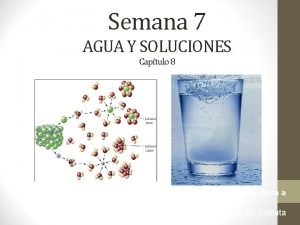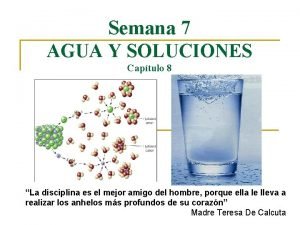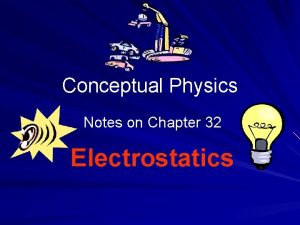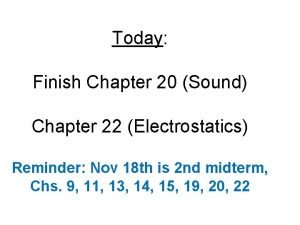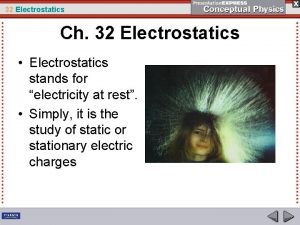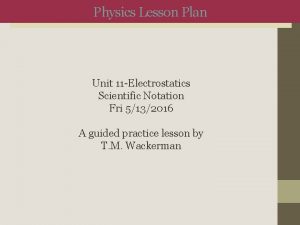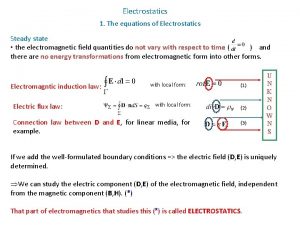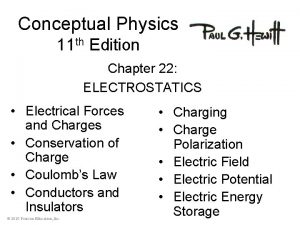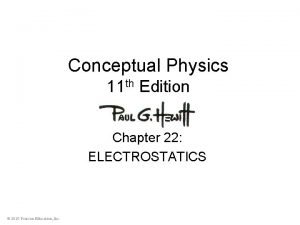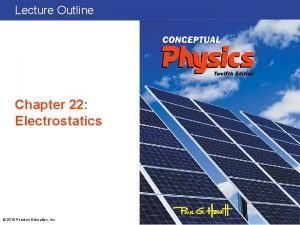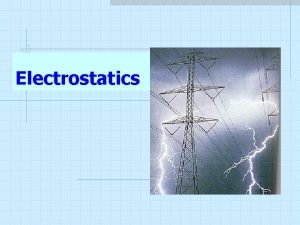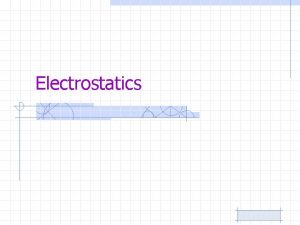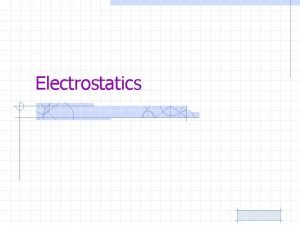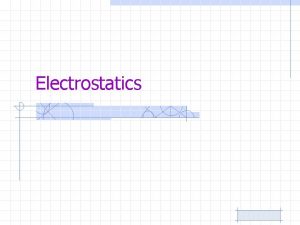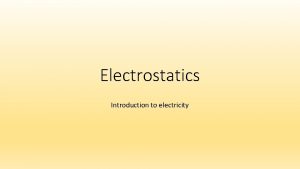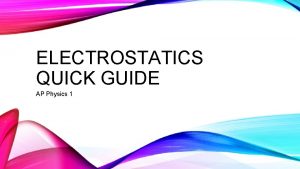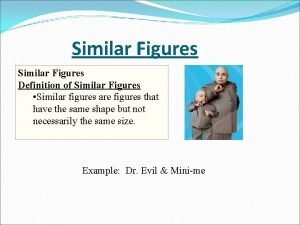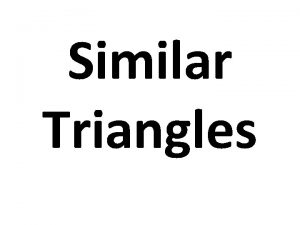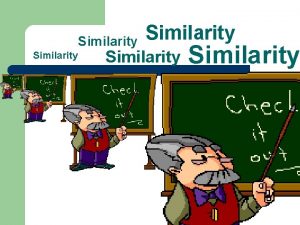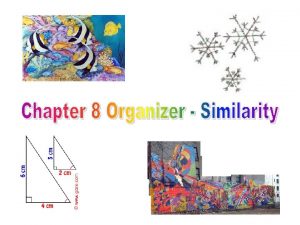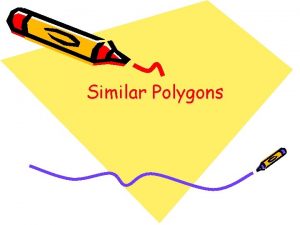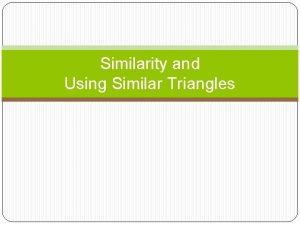Magnetism Magnets Magnets act very similar to electrostatics

















- Slides: 17

Magnetism

Magnets • Magnets act very similar to electrostatics (static electricity) • There are two poles in a magnet (North and South) • Opposites attract, likes repel (this push or pull is magnetic force) • Magnets do NOT have to touch for this force to work • Magnetic field- area around a magnet where the magnetic force can be felt

Unlike static electricity • Poles always come in pairs • You can not separate the two like you could with static charges break a magnet in half N N S S N Take just a sliver off S N S And you get two magnets and you still get another (thin) magnet

Magnetic Field Lines • Lines are commonly drawn to show the region of the magnetic field. • You can really see these lines if you place a iron fillings near a magnet N S Where the lines are closest you will feel the most force. The Poles

Magnetic Fields lines

Where magnetism comes from • Magnetism is produced by a moving electric charge • In an atom, electrons spin as they orbit. This spin creates a magnetic field. • Normally all electrons spin in opposite directions, so they cancel each other out. • So most materials are unaffected by magnets.

But… • Some materials do not cancel out all magnetic fields created by this spin. • Iron, Nickel and Cobalt all have electrons whose spin does not cancel out. • Each atom then is a tiny magnet in these elements. • So why isn’t every piece of iron nickel or cobalt a magnet?

Magnetic domains • Area in a material where there is a net magnetic field (they are in materials attracted to magnets only) • Normally they point in every which way canceling each other out (nonmagnetized) • Magnets have all magnetic fields pointing *arrows are magnetic domains the same way iron not magnetized iron

Creating magnets • To create a magnet you only have to line up the magnetic domains (of a material that has magnetic domains) • To line up magnetic domains the material needs to be placed in a magnetic field. • ~holding a magnetic material up to a strong magnet will make it a magnet. .

Electric current • Magnetism is caused by a moving charge • Electric current is moving charge • Current moving through a wire produces a magnetic field • This is how a circuit breaker works • As the current increases (closer to being an overloaded wire) the magnetic field increases • When the magnetic field is strong enough it flips the switch (w/ a permanent magnet in it), opening the circuit.

Circuit Breaker wire Circuit breaker switch (magnet) Too much current creates a magnetic field strong enough to flip the switch and break the circuit

Right hand rule • You can determine where the magnetic field will be by the right hand rule. • Place your thumb on a wire carrying current pointing your thumb in the direction the current is going (use your imagination don’t shock yourself) • Wrap your fingers around the wire and your fingers will point in the direction of the magnetic North field (not geographic North), the opposite is South

Right Hand Rule Actual wire with a current surrounded by iron filing

To increase this effect… • Coil the wire into loops forming a cylinder • this coil is called a solenoid • The magnetic fields bunch up inside the loops overlapping each other. • When a current is run through the wire an electromagnet is created. • Place a ferromagnetic material (one that can be magnetized) in the loop to increase the effect.

Magnetic Field in a Coil If you keep adding loops on top of one another you get a stronger magnetic field

Electromagnet • Electromagnet is a magnet that can be turned on with current running through and then turned off.

When the Electric current is on, magnetic force pulls hammer to hit the bell But is also attracts this break point which opens the circuit (Door) Bell No current, no magnetic field. The springs push everything back. Break point is released, current resumes…
 Is a very shallow skillet with very short sloping sides
Is a very shallow skillet with very short sloping sides Figure 10
Figure 10 Quantifiers for food
Quantifiers for food Used to express very large or very small numbers
Used to express very large or very small numbers Fewfewfewf
Fewfewfewf Propiedades fisicoquímicas del agua
Propiedades fisicoquímicas del agua Similar
Similar Members of an avian species of identical plumage congregate
Members of an avian species of identical plumage congregate Similar disuelve a similar
Similar disuelve a similar Chapter 32 electrostatics conceptual physics
Chapter 32 electrostatics conceptual physics Chapter 22 electrostatics
Chapter 22 electrostatics Electrostatics
Electrostatics Electrostatics lesson plan
Electrostatics lesson plan Electrostatics equations
Electrostatics equations Electrostatics
Electrostatics Conceptual physics chapter 22 electrostatics
Conceptual physics chapter 22 electrostatics Conceptual physics chapter 22 electrostatics
Conceptual physics chapter 22 electrostatics Chapter 22 electrostatics
Chapter 22 electrostatics






